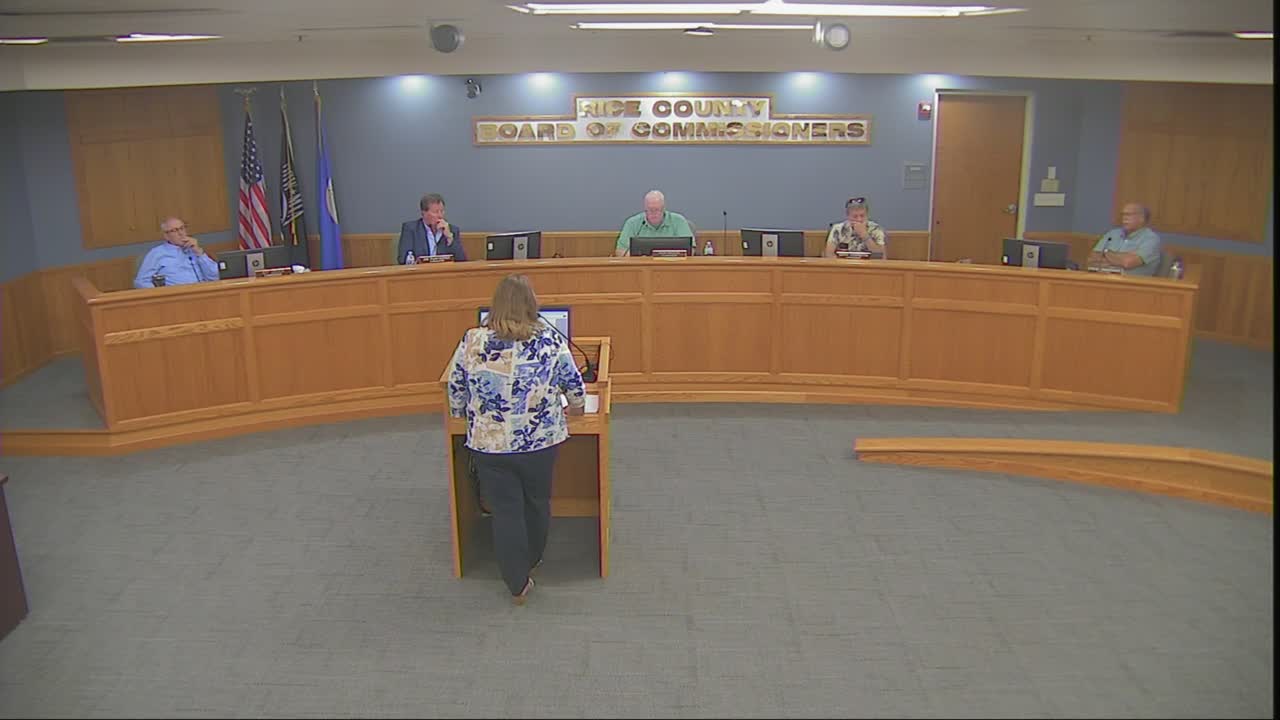Rice County voters to decide on new sales tax for public safety
August 13, 2024 | Rice County, Minnesota
This article was created by AI summarizing key points discussed. AI makes mistakes, so for full details and context, please refer to the video of the full meeting. Please report any errors so we can fix them. Report an error »

Rice County's Board of Commissioners has approved a resolution to place a significant ballot question before voters in the upcoming 2024 general election, scheduled for November 5. The proposed measure seeks authorization for a 0.375% sales and use tax to fund a new public safety center, with a principal cost not exceeding $48 million, plus associated bonding costs and interest. If approved, the tax would be implemented starting April 1, 2025, and would remain in effect for up to 30 years or until the bonds are retired.
During the meeting, commissioners discussed the implications of the proposed tax, emphasizing that a \"yes\" vote would mean financing the majority of the project through sales tax rather than property taxes. Conversely, a \"no\" vote would result in continued reliance on property taxes for funding. The board acknowledged the importance of educating the public about the potential impacts of the tax, particularly regarding how it might affect individual tax burdens.
Commissioner Underdahl expressed support for allowing voters to decide, noting that the sales tax could be a more favorable option for some taxpayers compared to property tax. However, he cautioned that voters should not expect a reduction in property taxes if the sales tax is approved, as budget increases could offset any savings.
Concerns about the legality of placing the measure on the ballot were addressed, with assurances that state legislation permits the county to proceed. The board also discussed the necessity of clear communication to avoid confusion among voters regarding the financial implications of their choices.
The resolution reflects a broader trend of local governments seeking alternative funding mechanisms for public projects, allowing residents to weigh in on significant financial decisions that will impact their community for decades to come.
During the meeting, commissioners discussed the implications of the proposed tax, emphasizing that a \"yes\" vote would mean financing the majority of the project through sales tax rather than property taxes. Conversely, a \"no\" vote would result in continued reliance on property taxes for funding. The board acknowledged the importance of educating the public about the potential impacts of the tax, particularly regarding how it might affect individual tax burdens.
Commissioner Underdahl expressed support for allowing voters to decide, noting that the sales tax could be a more favorable option for some taxpayers compared to property tax. However, he cautioned that voters should not expect a reduction in property taxes if the sales tax is approved, as budget increases could offset any savings.
Concerns about the legality of placing the measure on the ballot were addressed, with assurances that state legislation permits the county to proceed. The board also discussed the necessity of clear communication to avoid confusion among voters regarding the financial implications of their choices.
The resolution reflects a broader trend of local governments seeking alternative funding mechanisms for public projects, allowing residents to weigh in on significant financial decisions that will impact their community for decades to come.
View full meeting
This article is based on a recent meeting—watch the full video and explore the complete transcript for deeper insights into the discussion.
View full meeting
